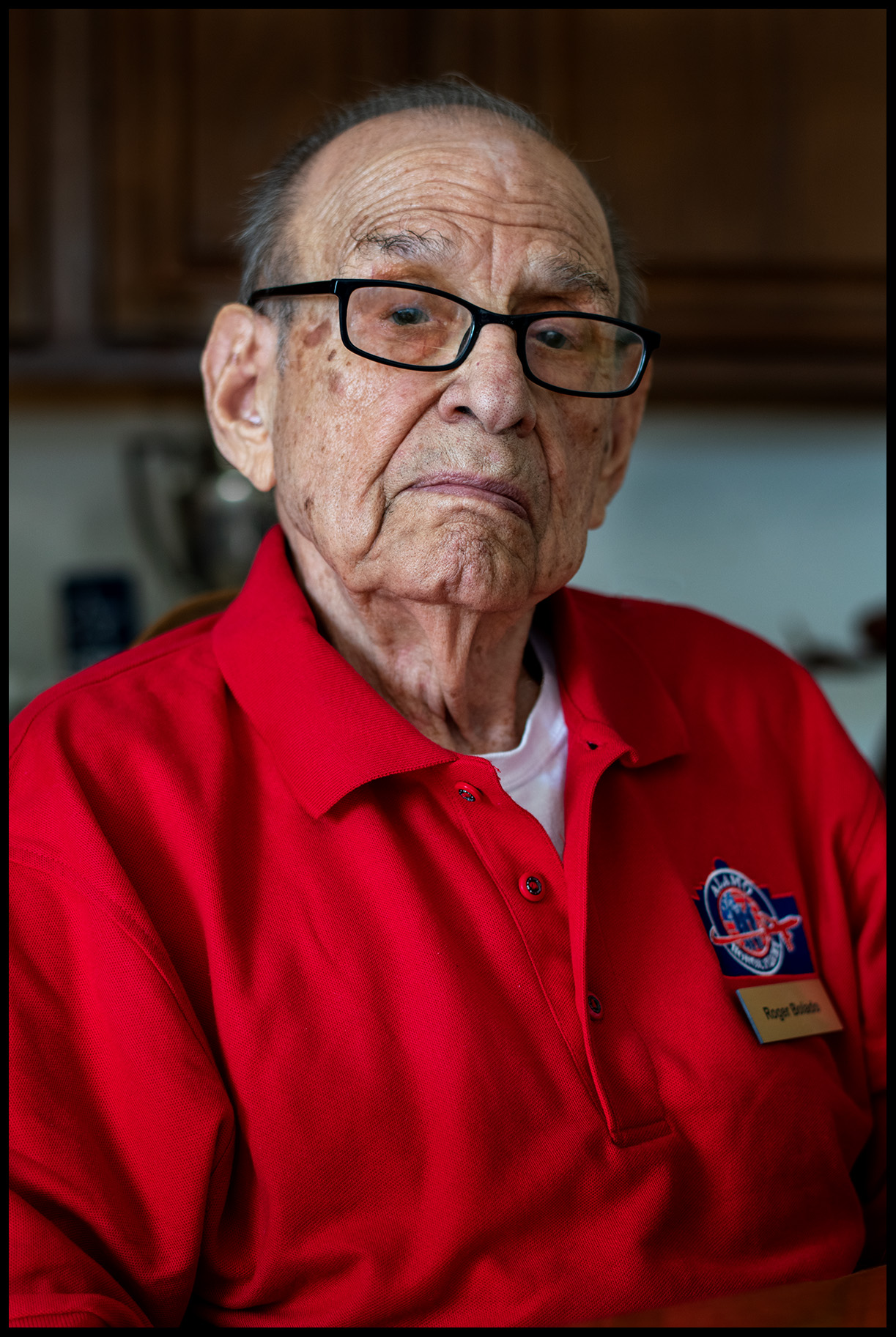Rogelio “Roger” Bolado
Flew 51 missions in ETO
Rogelio Bolado
Senior Master Sergeant, Army Air Corps
1942-1945 & 1950-1970

Pvt. Rogelio (Roger) Bolado
Great Lakes, IL, 1943
My worst mission was Ploiesti, Romania. I went there twice to hit the refineries… When we went up, we never knew if we were coming back.
I was born in Hildago, Mexico in 1919 and came to Texas when I was nine because my father had political problems. I graduated high school in 1937 and my brother and I opened a small filling station. It was the Depression and things were very hard. I was drafted in June, 1942. I took a bunch of tests and went into the Army Air Corps. I was not a U.S. citizen, but they drafted me anyway.
I went to Sheppard Field for airplane mechanic school and became an American citizen in November, 1942. There were several of us and we put up our hand and they said we were citizens. I worked in Greenville, Mississippi as an airplane mechanic, then I volunteered for aerial gunnery at the end of 1943 and went to gunnery school. From there I went to Rapid City for crew member training. We had a crew of six airmen and four officers.
We went to Nebraska in May, 1944 to pick up a brand-new B-17 and flew to Foggia, Italy. We lived in tents with dirt floors, took showers outside and got one can of beer a week. We didn’t have ice, so we’d bury the cans in the ground to get them cold. When we came back from a combat mission, they gave us a shot of whiskey. The British were on the other side of the runway and flew nuisance missions at night to keep the Germans awake.
I was in the 99th Bomb Group in the 247th Squadron. My worst mission was Ploiesti, Romania. I went there twice to hit the refineries. Munich and Vienna were tough targets, but Ploiesti was the worst. It was very well defended. I was fighting the fighters, but we couldn’t do anything about the flak. We lost quite a few people there. When we went up, we never knew if we were coming back. It was a 50/50 chance.
We had P-51s and P-38s escorting us, but they didn’t have enough gas to go all the way to the target. The
P-51s were real good. That was the squadron of black pilots, the Tuskegee Airmen. They were based a few miles from us. There was a group of black soldiers that came to guard our planes every night, but we never saw them. On one of our final missions, we saw a jet for the first time. Nobody had ever seen a plane without propellers. We didn’t know they existed. I was in Foggia for a little over six months flying 51 missions. We celebrated New Year 1945 on the ship going home.
We went to a rest camp in California for 30 days. Then they sent me to school for aerial gunnery for the B-29. I went to Biggs Army Airfield as an instructor for B-29 crews going to the Far East. I was discharged in October, 1945 as a tech sergeant and came to San Antonio and worked for the Army repairing radios. They recalled me for Korea and sent me to Alaska doing airplane maintenance. I stayed in. I had a special assignment in Taiwan from 1959-1961 as an adviser to the Chinese Air Force for the new 104s. I was supposed to go to Vietnam, but they called me back because they needed someone who spoke Spanish in Panama. I did aircraft maintenance again. We were in Panama for five years and drove back to Texas in a station wagon with six kids.
I retired in 1970 as a senior master sergeant and worked for Immigration Services for 22 years. My wife Alicia and I were married 60 years. She passed away in 2009.
I was awarded the Bronze Star, Silver Star, and Air Medal with two bronze clusters. My campaigns were Rome, Arnes, Southern France, Normandy, Northern France, Rhineland. {02-27-2019 • San Antonio, TX}
